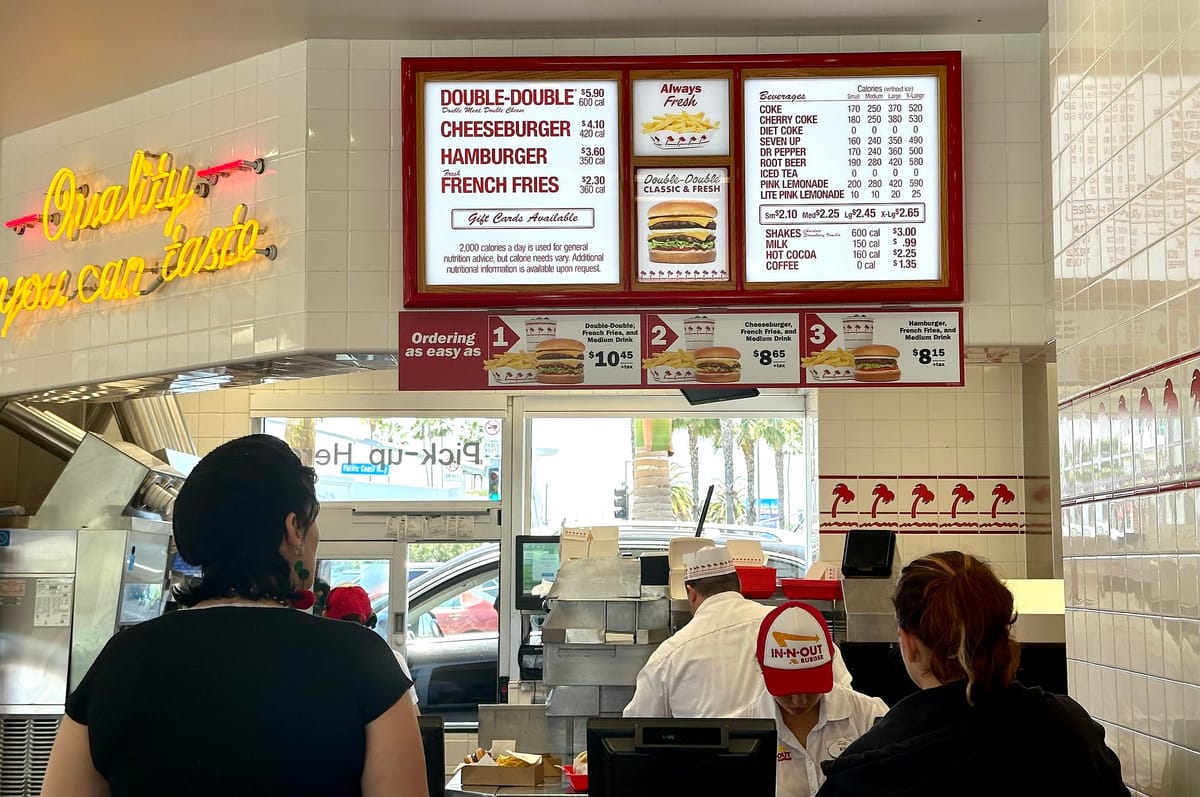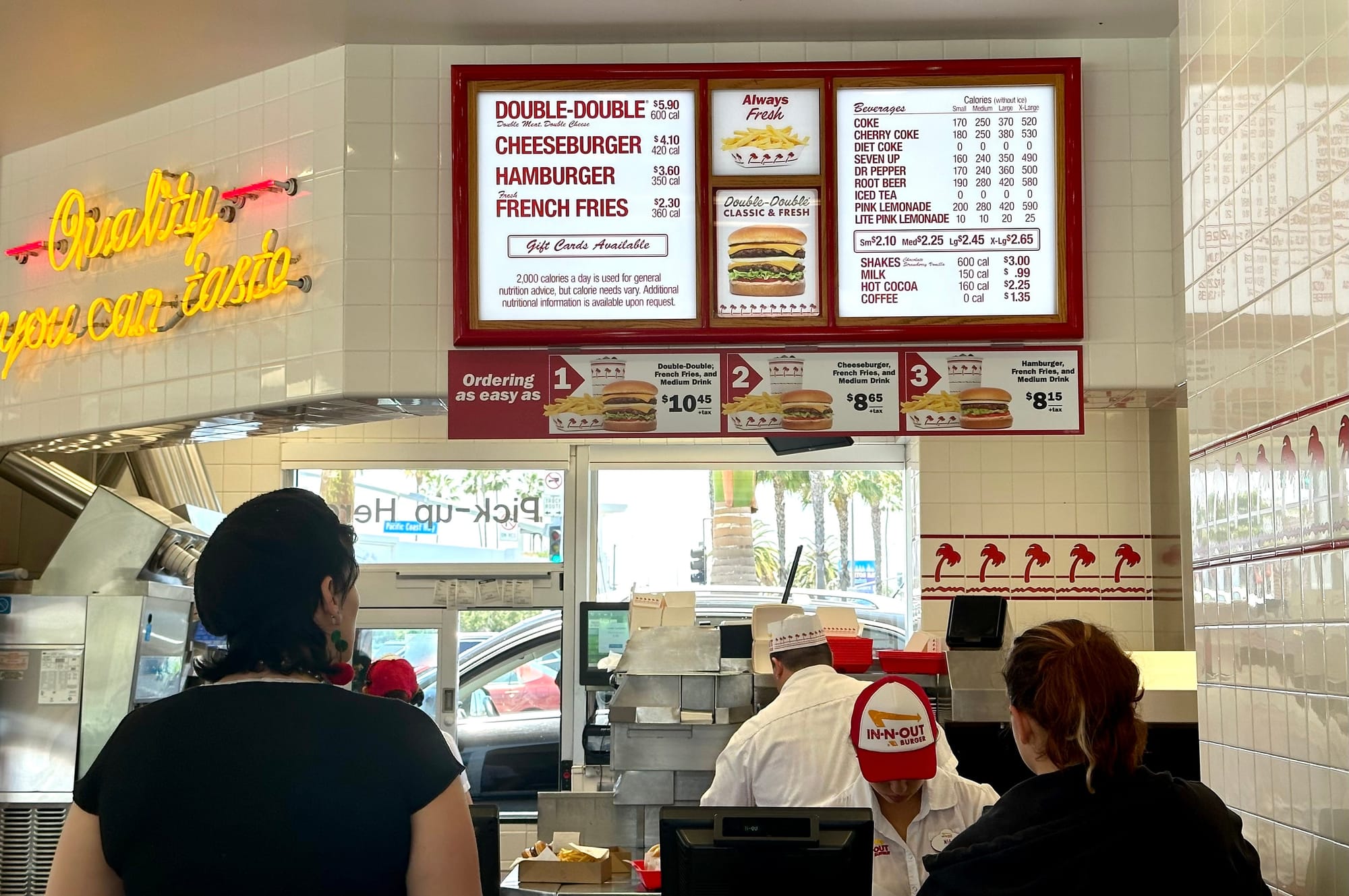Column: Your burger costs more because of the housing crisis
Fast food restaurants are raising prices and some are blaming the state’s minimum wage; but wages, and prices, are increasing because housing is so expensive.

Housing prices are the biggest cause of sustained inflation in California and the rest of the U.S.
While minimum wages and fast food prices are the most conspicuous effects, the cause of these price increases continues to be housing, the biggest expense for all households whether they’re making minimum wage or more.
The cost of shelter in California remains high; the median rent for a one-bedroom apartment in the state is $2,174, according to Zillow. While that’s a decrease of $26 since this time last year, the price is still far more than what a minimum wage worker at $16 an hour in California can afford working 40 hours a week.
Those rents are a huge reason inflation has persisted after its peak a few years ago, and the reason why fast food meals are a bit pricier.

“Inflation has substantially cooled from its highs in 2022,” wrote Christian E. Weller and David Correa for the Center for American Progress. “However, it remains above the Federal Reserve’s preferred rate of 2 percent, in large part because housing inflation for both rented and owner-occupied housing is only slowly abating.”
In other words, housing costs are the reason inflation overall is staying high. Minimum wage workers are by definition the most vulnerable to these costs and a natural response is pushing wages higher.
There’s a reason the states with the highest housing prices also have the highest minimum wages. Campaigns to raise the minimum wage in California are usually driven by the thing that accounts for nearly 30 percent of residents’ income.

In 2022, Assemblymember Chris Holden, a Democrat from Pasadena, introduced a bill that would create a fast food council to set wages and working conditions. It was passed and signed into law by Gov. Gavin Newsom, but industry leaders quickly fought back.
They successfully placed a referendum on the November 2024 ballot that would potentially let voters repeal that law. Considering these referendums have become spending sprees in which the richest corporations usually win, the Legislature was quick to work towards another solution.
So this year, the state legislature, labor unions and industry leaders agreed to a sector-specific minimum wage for fast food workers and other protections, contingent on the industry-backed referendum being pulled.
As of April 1, chain stores with more than 60 locations in the state have been required to pay workers $20 an hour.
In response, several news outlets have run stories on how many jobs have allegedly been lost and how expensive menu items have become.
Jake Gotta was laid off on March 22, yet he continues to cover Long Beach with the Watchdog for free. Please thank him for his work.
“The price for a spicy chicken sandwich [in Los Angeles] had gone up to $7.09 from $6.29, or 13%, since mid-February, according to research by Gordon Haskett Research Advisors,” lamented a Wall Street Journal article from April.
But while some marginal price increases are happening, the issue with this narrative is that restaurants in California have in fact added jobs both in the past year and since the law went into effect.
According to the Bureau of Labor Statistics, employment at California “Food Services and Drinking Places” has increased by nearly 10,000 jobs since April of last year and added jobs each of the past three months.
The same can be said for employment at restaurants specifically, and “Limited-Service Restaurants,” or fast food places. Far from decimating the industry, there are now more people working, and for more money.

The result of these higher wages, of course, is marginally higher prices for consumers. But according to the Bureau of Labor Statistics, at least here in the Los Angeles area, food prices have been rising at a slower rate than the consumer price index.
Year over year, food prices have increased by 3.3% compared to the CPI increase of 3.9%.
“Prices for food away from home increased 4.7 percent,” according to this report, reflecting a slightly larger increase than the CPI, but far less than the increases from October of 2021 to November of 2022, when prices rose by more than 5% every month.
The minimum wage law that went into effect this year was not the cause of that price inflation in the past few years. What is driving continued price growth is the price of rents in California, caused by our ongoing housing shortage.
You can fix that by making it easier to build a lot of new homes.
Long Beach Watchdog is a reader-supported publication. To receive new posts and support our work, please consider subscribing.
We need your support.
Subcribe to the Watchdog today.
The Long Beach Watchdog is owned by journalists, and paid for by readers like you. If independent, local reporting like the story you just read is important to you, support our work by becoming a subscriber.





